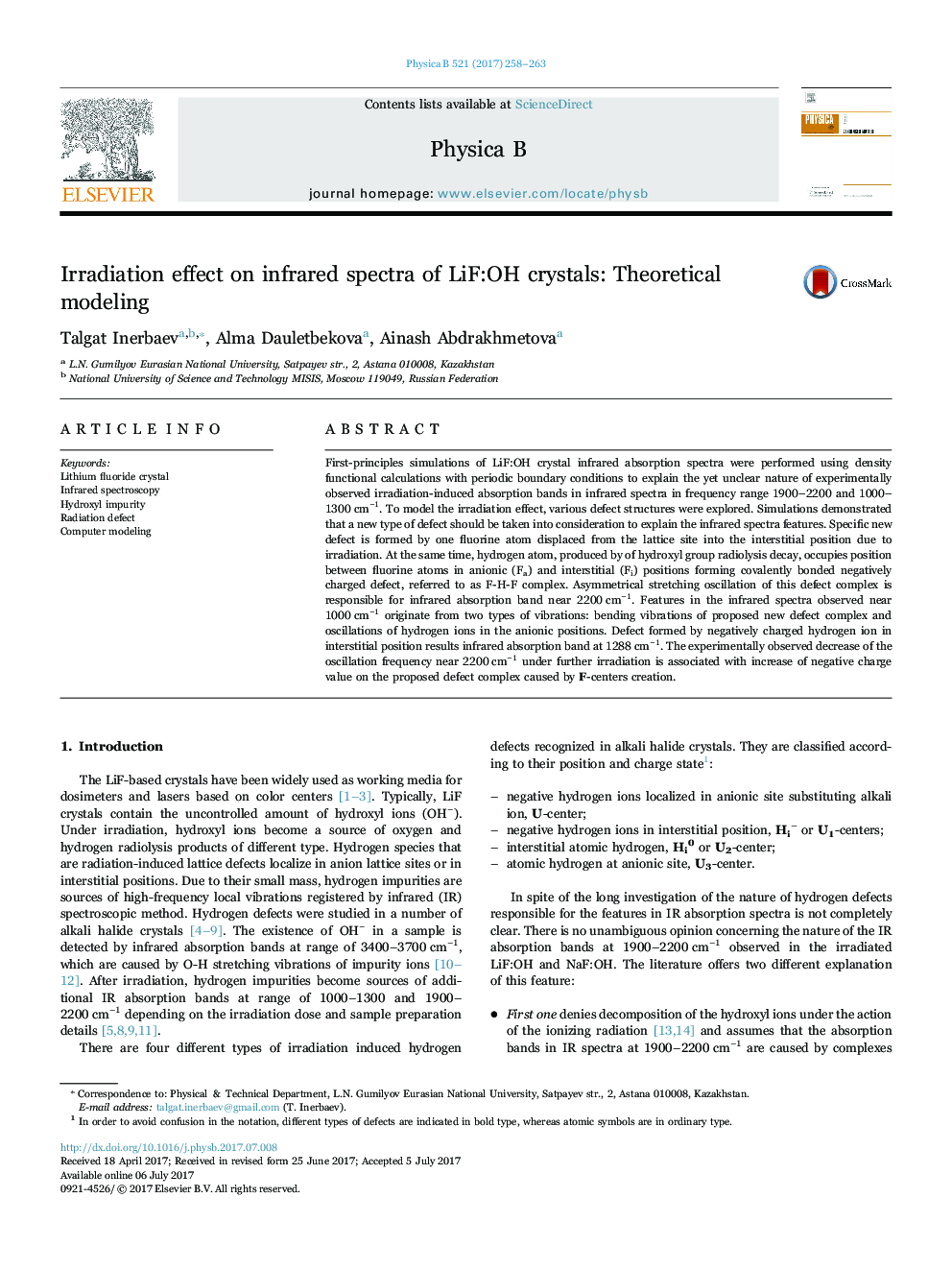| Article ID | Journal | Published Year | Pages | File Type |
|---|---|---|---|---|
| 5491810 | Physica B: Condensed Matter | 2017 | 6 Pages |
Abstract
First-principles simulations of LiF:OH crystal infrared absorption spectra were performed using density functional calculations with periodic boundary conditions to explain the yet unclear nature of experimentally observed irradiation-induced absorption bands in infrared spectra in frequency range 1900-2200 and 1000-1300Â cmâ1. To model the irradiation effect, various defect structures were explored. Simulations demonstrated that a new type of defect should be taken into consideration to explain the infrared spectra features. Specific new defect is formed by one fluorine atom displaced from the lattice site into the interstitial position due to irradiation. At the same time, hydrogen atom, produced by of hydroxyl group radiolysis decay, occupies position between fluorine atoms in anionic (Fa) and interstitial (Fi) positions forming covalently bonded negatively charged defect, referred to as F-H-F complex. Asymmetrical stretching oscillation of this defect complex is responsible for infrared absorption band near 2200Â cmâ1. Features in the infrared spectra observed near 1000Â cmâ1 originate from two types of vibrations: bending vibrations of proposed new defect complex and oscillations of hydrogen ions in the anionic positions. Defect formed by negatively charged hydrogen ion in interstitial position results infrared absorption band at 1288Â cmâ1. The experimentally observed decrease of the oscillation frequency near 2200Â cmâ1 under further irradiation is associated with increase of negative charge value on the proposed defect complex caused by F-centers creation.
Related Topics
Physical Sciences and Engineering
Physics and Astronomy
Condensed Matter Physics
Authors
Talgat Inerbaev, Alma Dauletbekova, Ainash Abdrakhmetova,
